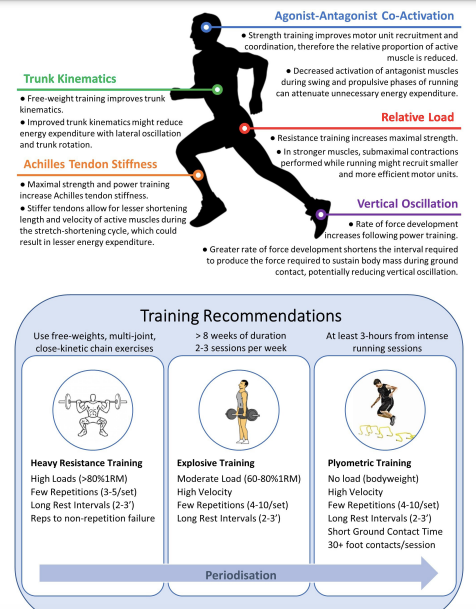How To Build Up Your Stamina

Feeling winded after climbing a single flight of stairs? Wishing you could power through that afternoon slump without reaching for another coffee? Building stamina is a goal for athletes and everyday individuals alike, and achieving it is more accessible than many realize.
This article explores practical, evidence-based strategies to improve your endurance, focusing on gradual training, proper nutrition, and adequate rest. We'll delve into the "who, what, where, when, why, and how" of stamina building, providing a roadmap to help you achieve your fitness goals, whether you're aiming to run a marathon or simply enjoy a more active lifestyle.
Understanding Stamina: More Than Just Muscle
Stamina, often used interchangeably with endurance, refers to your body's ability to sustain physical or mental effort over a prolonged period. It's not solely about muscle strength; it's a complex interplay of cardiovascular health, muscle efficiency, and mental fortitude.
Cardiovascular endurance, the ability of your heart and lungs to supply oxygen to working muscles, is a cornerstone of stamina. Muscle endurance, on the other hand, focuses on the muscles' capacity to repeatedly contract without fatigue. Mental toughness plays a crucial role in pushing through perceived limitations.
The Gradual Approach: Training Smart, Not Just Hard
A common mistake when aiming to build stamina is overdoing it too soon. This often leads to injury and burnout. The key is progressive overload: gradually increasing the intensity, duration, or frequency of your workouts.
For example, if you're starting a running program, begin with a mix of walking and jogging intervals. Increase the jogging time and decrease the walking time over several weeks. This allows your body to adapt and strengthen gradually.
Cardiovascular Training: The Engine of Endurance
Aerobic exercise is the most effective way to improve cardiovascular stamina. Activities like running, swimming, cycling, and brisk walking challenge your heart and lungs, making them more efficient at delivering oxygen.
The American Heart Association recommends at least 150 minutes of moderate-intensity aerobic activity or 75 minutes of vigorous-intensity activity per week. Remember, consistency is key. Short, regular workouts are more beneficial than sporadic, intense sessions.
Strength Training: Building a Strong Foundation
Strength training is often overlooked in endurance training, but it's crucial for building muscle endurance and preventing injuries. Stronger muscles are more efficient and less prone to fatigue.
Focus on compound exercises that work multiple muscle groups, such as squats, lunges, push-ups, and rows. Aim for 2-3 strength training sessions per week, allowing for adequate rest between sessions. Use light to moderate weights and focus on higher repetitions.
Fueling Your Body: Nutrition for Endurance
Your diet plays a vital role in stamina development. Providing your body with the right nutrients is essential for energy production, muscle repair, and overall health.
A balanced diet rich in complex carbohydrates, lean protein, and healthy fats is crucial. Complex carbohydrates, such as whole grains, provide sustained energy. Lean protein, found in chicken, fish, beans, and tofu, aids in muscle repair. Healthy fats, like those found in avocados, nuts, and olive oil, support hormone production and overall health.
Proper hydration is equally important. Dehydration can significantly impair performance. Aim to drink plenty of water throughout the day, especially before, during, and after workouts.
"Nutrition is the cornerstone of endurance training. You can't outrun a bad diet." - Dr. Sarah Jones, Sports Nutritionist.
The Importance of Rest and Recovery
Rest is not just about avoiding activity; it's an active process of repair and rebuilding. Adequate rest allows your muscles to recover, your energy stores to replenish, and your body to adapt to the demands of training.
Aim for 7-9 hours of quality sleep per night. Sleep deprivation can negatively impact performance, increase the risk of injury, and weaken the immune system. Incorporate rest days into your training schedule. Overtraining can lead to fatigue, injury, and decreased performance.
Active recovery, such as light stretching or a leisurely walk, can also aid in recovery by improving blood flow and reducing muscle soreness.
Mind Over Matter: The Mental Game of Stamina
Stamina is not just physical; it's also mental. Developing mental toughness is essential for pushing through fatigue and overcoming challenges. Visualization, positive self-talk, and goal setting can help to improve your mental endurance.
Break down your goals into smaller, manageable steps. This makes the overall goal seem less daunting and provides a sense of accomplishment along the way. Focus on the present moment. Instead of dwelling on how much further you have to go, focus on each step, each breath.
Putting It All Together: A Holistic Approach
Building stamina is a holistic process that requires a combination of gradual training, proper nutrition, adequate rest, and mental fortitude. There's no magic bullet, but by following these principles, you can progressively improve your endurance and achieve your fitness goals.
Remember to consult with a healthcare professional or certified trainer before starting any new exercise program, especially if you have any underlying health conditions. They can help you create a personalized plan that is safe and effective for you.
Start slowly, be consistent, and listen to your body. With dedication and patience, you can unlock your full potential and enjoy the many benefits of improved stamina, from increased energy levels to a healthier, more active lifestyle.


















